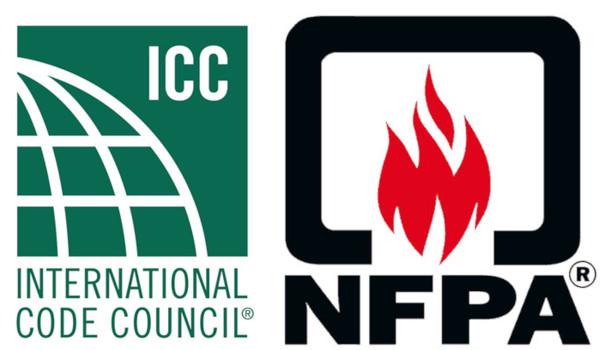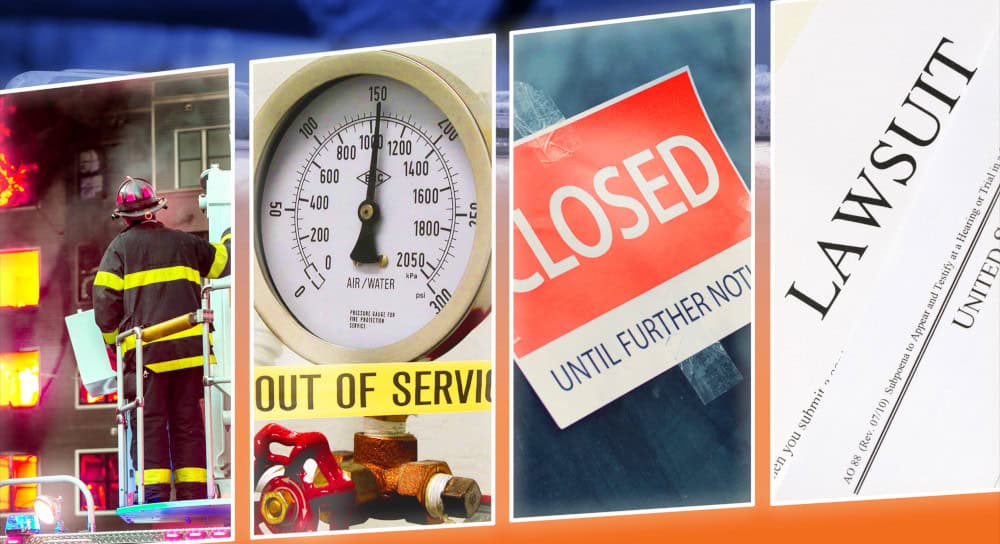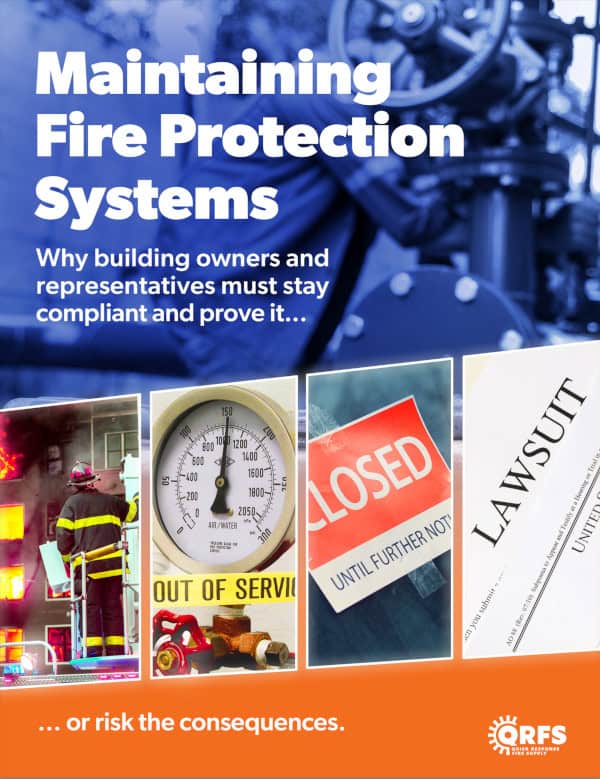Examining the risks of fire protection non-compliance, from lost lives and property to lawsuits, dropped insurance coverage, criminal negligence, and more
The most significant consequences of not installing and maintaining appropriate fire protection systems are mirror images of their purpose. Systems are incredibly effective at saving lives, preventing injuries, and protecting property—so insufficient systems and upkeep can have tragic or costly impacts.
The risks don’t end there, however. And building owners or their designated representatives—the individuals ultimately responsible for installing and maintaining these systems—should be aware of them.
Learn the essentials below, and order QRFS’s new eBook for a much deeper look at common compliance gaps, risk case studies, expert interviews, stats, and more!
The fire protection challenges
Fire protection may be an incredibly valuable and effective industry, but it falls short in simplicity.
Many building and business owners know they must install and maintain systems, but navigating the rules, building departments, fire inspectors, and other compliance aspects can be tough.
Codes vary and aren’t always easy to read and interpret; system installation and maintenance standards aren’t a piece of cake, either. So, building owners and managers rely on industry professionals, from designers to ITM contractors to government authorities having jurisdiction (AHJs), to guide them through the process.
Unfortunately, though most industry pros are qualified, their knowledge, diligence, documentation, and communication skills can still vary. And occasionally, the rules aren’t even perfectly clear to the experts.

At QRFS, we regularly clarify confusion and suggest ways to increase compliance through our Ask a Fire Pro service. The fact that we’ve answered questions for end users and pros—even some AHJs—tells us how complicated the world of fire protection can sometimes be.
Nevertheless, building owners and managers find compliance particularly tough. Many lack the time and knowledge to quickly understand their legal and safety requirements. This situation can lead to gaps that present unknown risks.
For example, a QRFS survey of our customers and website visitors revealed:
- Only 53.4% of property managers were highly confident they could prove their property conducts all legally required inspection, testing, and maintenance activities.
- 27% were only “somewhat confident.”
- 19.6% were “not confident at all.”
The risks of not following the rules
Again, the essential threats from failing to install and maintain fire protection systems correctly are deaths, injuries, and properties burning to the ground.
Coming in just behind those risks are business interruptions—well-protected buildings and organizations often shrug off quickly handled fires, whereas unprotected ones close for some time or forever.
However, there are more hazards, including:
- Denied insurance claims
- Loss of insurance coverage
- Involvement in insurance subrogation lawsuits
- Expensive government fines, lawsuits, fire watches, or building shutdown orders
- Civil lawsuits from affected parties after a fire results in deaths, displacements, or injuries
- Criminal charges can happen after a tragic fire that involves negligence
QRFS’s new eBook breaks down compliance gaps and consequences
QRFS exists to simplify fire protection. So, we created an eBook explaining why building owners and managers must properly install and maintain their systems.
It includes:
- Common and hidden compliance gaps and risks of failing to complete and document installations, inspections, testing, and maintenance
- An explanation of who is responsible for what
- The perspectives of industry insiders, including risk management, ITM, and enforcement experts
- Case studies showing some real-life consequences of fire protection system failures, including insurance impacts, fines, lawsuits, property loss, and criminal charges
Whether you are a building owner or manager unsure about your responsibilities or an AHJ or fire protection contractor who would like a resource to explain these concepts, this eBook has valuable information.
Download the Maintaining Fire Protection Systems eBook
If you have any questions, contact us at 888.361.6662 or support@qrfs.com.
This blog was originally posted at blog.qrfs.com. If this article helped you, check us out at Facebook.com/QuickResponseFireSupply or on Twitter @QuickResponseFS.





My apartment has been without two sprinkler heads since July 25th and the manager just decided to get them put in today on September 9th and the only reason that they came to change them is because I asked them about them and now they want to evict me… These are horrible people!!!